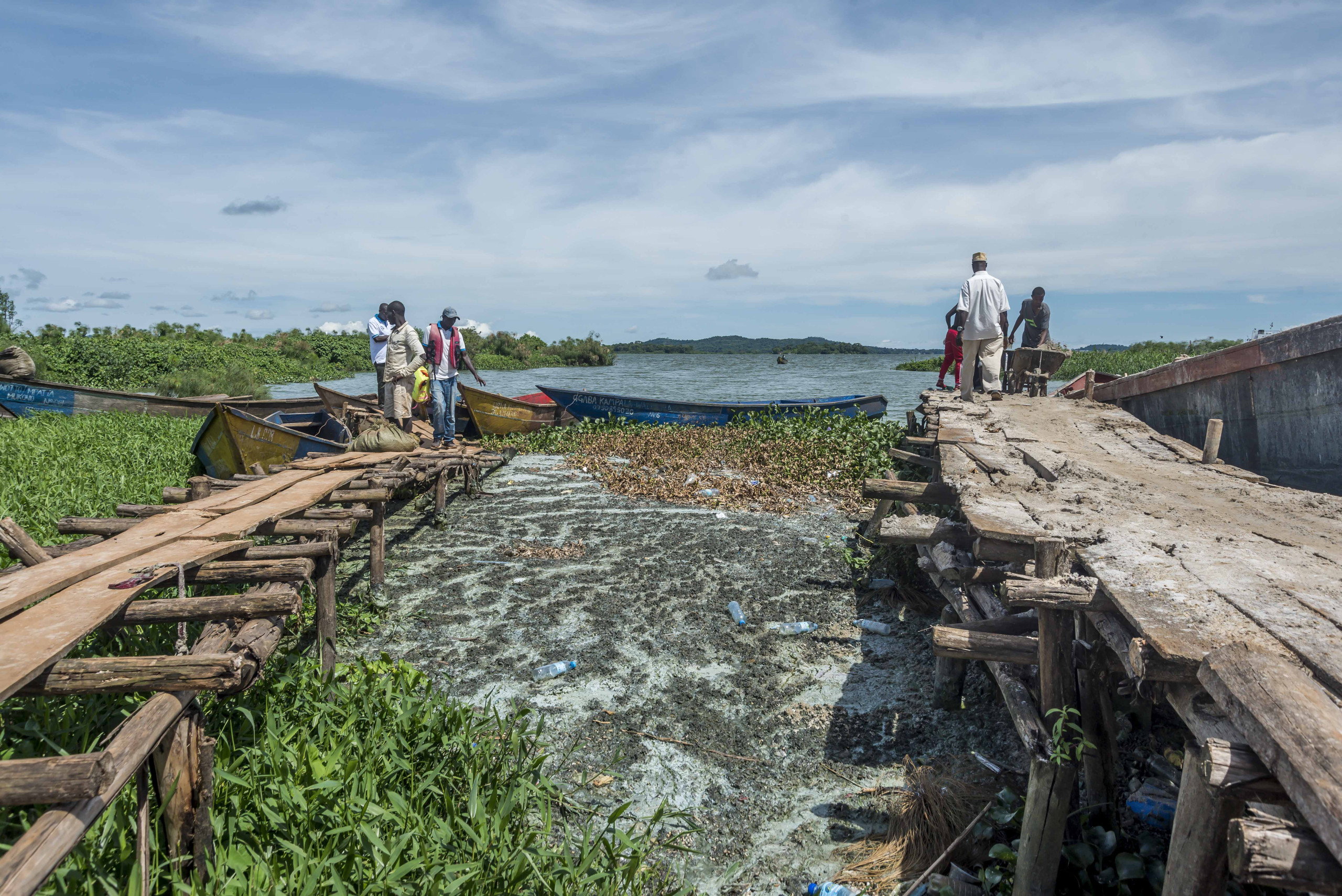Uganda is facing a growing water pollution crisis due to toxic runoff from industries, sewage, and chemicals which pose a threat to the country’s lakes and rivers. According to the National Environment Management Authority, water pollution is the second-biggest environmental threat in Uganda after deforestation. Added to the poor water and sanitation infrastructure, the ongoing water pollution crisis has led to contaminated drinking water and an increase in water-borne diseases.
See also: Water crisis: Will Uganda achieve its pledge for clean water for all by 2030?
Uganda boasts abundant freshwater resources with 36,527.4 square kilometers of open water areas. These include important rivers such as the Nile, Muzizi, Semliki, Sezibwa, Kafu, Katonga, and Kagera, as well as lakes like Victoria, Albert, Kyoga, George, and Edward.
Contaminated water and water-borne diseases
Despite its abundant water sources, over 24 million of Uganda’s 44 million people lack access to basic drinking water supplies, according to World Vision Uganda. Moreover, approximately 19% of Ugandans, especially in rural areas, typically obtain their drinking water from surface sources such as ponds, rivers, lakes, streams, and unsafe hand-dug wells.
More than 70% of all diseases such as cholera, diarrhea, dysentery, Hepatitis A, typhoid, and polio that are treated in Uganda are directly caused by a lack of clean water or poor sanitation and hygiene practices.
According to BioMed Central, diarrhea accounts for 22% of all fatalities among Ugandan children under the age of five.
Uganda’s main water sources badly polluted
According to statistics supplied by Richard Musota, the Water Ministry’s team leader for the Upper Nile Water Management Zone, 47% of the region’s principal water sources, primarily boreholes, springs, drilled wells, and precipitation, are polluted and thus unfit for domestic use.
Furthermore, one of Uganda’s main water source, Lake Victoria, which is the country’s second-largest water source, the largest freshwater lake in the world by surface, and the largest lake in Africa, has seen startlingly high pollution levels.
Freshwater Biodiversity in the Lake Victoria Basin research conducted by the International Union for Conservation of Nature in 2018 identified pollution as a threat to 90.2% of the lake’s natural fish species. Despite this warning, in 2021 Uganda was struck by a devastating environmental crisis with mass death of fish in Lake Victoria being primarily caused by industrial pollution and human activities.

Plastic, industrial waste, and agricultural runoff
The main source of water pollution in Uganda is industrial waste. Businesses generate volumetric waste which is released into adjacent water bodies without treatment, potentially deteriorating the water quality. Most Ugandan enterprises employ antiquated production technologies and lack effluent treatment units and raw and harmful waste is therefore discharged into surrounding water bodies.
In 2015, the Ugandan Water Ministry reported that 513 industries around Lake Victoria had discharged industrial waste into the lake affecting the quality of the primary source of water for residents of Kampala, Uganda’s capital and largest city.
A baseline 2021 research revealed that approximately 9,948 tons of plastic waste goes uncollected each year with 44% of this ending up on land, 11% in water, 6% in sewers, and 39% being burnt.
No other research on this matter has been made public since then.
Another major contributor to water pollution in Uganda is agricultural runoff. Farmers often use fertilizers and pesticides that seep into water bodies, causing eutrophication and algal blooms. This not only harms aquatic plants and animals but also renders the water unsafe for human consumption.
What of response?
Sam Cheptoris, the Water and Environment Minister, said the Ugandan government has made initiatives to combat water pollution, including establishing laws to regulate industrial discharge and promote sustainable agriculture practices.
“To tackle water contamination successfully, a multifaceted approach is required. This involves enhancing waste management methods, encouraging sustainable agriculture, investing in water treatment facilities, and educating the people on the necessity of maintaining water resources and the dangers of pollution,” he said.
“The Ugandan government has implemented several policies and initiatives to combat water pollution and protect the environment and the health of its citizens,” stated Hon. Beatrice Anywar Atim, Minister of State for the Environment, adding that “These frameworks are for managing environmental issues, including water pollution, and setting out guidelines for addressing pollution sources, monitoring water quality, and enforcing regulations. Two examples of those are the National Environment Management Policy and the Lake Victoria Environmental Management Project which are funded by the World Bank.”

